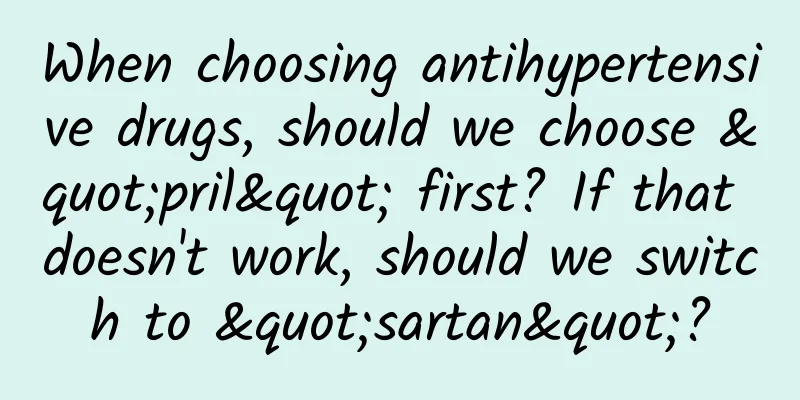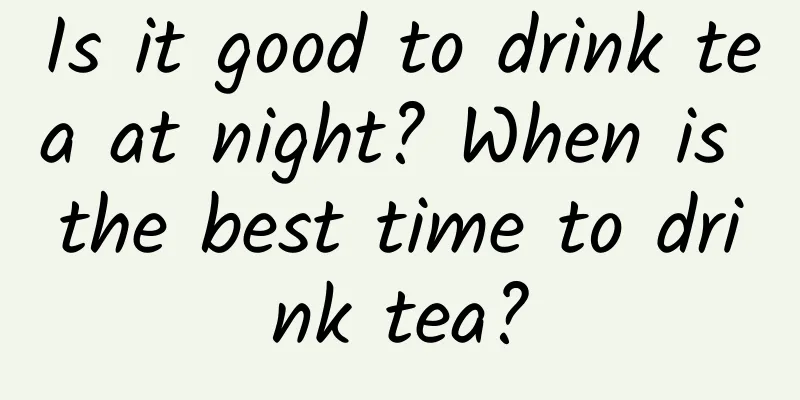When choosing antihypertensive drugs, should we choose "pril" first? If that doesn't work, should we switch to "sartan"?

|
A friend who suffers from high blood pressure asked Huazi a question, why when choosing antihypertensive drugs, they always say that pril antihypertensive drugs should be chosen first, and if the side effects of dry cough caused by pril drugs cannot be tolerated, sartan drugs can be used as a substitute. When choosing antihypertensive drugs, do we always follow the order of "pril" first, and then "sartan" if that doesn't work? Huazi said, not necessarily. "Pril" and "sartan" are both first-line antihypertensive drugs, and both can be used as the first choice for the treatment of hypertension, but the focus of treatment is different. Generally speaking, it is more suitable for the elderly to choose pril drugs first, while it is more suitable for the young and middle-aged population to choose sartan drugs first. 1. "Pril" and "Sartan" act on the same blood pressure regulation system. The regulation of human blood pressure is based on the renin-angiotensin-aldosterone system (RAAS). The specific process is that the renin secreted by the kidneys will combine with angiotensinogen and convert into angiotensin 1. Then, under the action of angiotensin converting enzyme, angiotensin 1 will convert into angiotensin 2. Angiotensin 2 is one of the most powerful vasoconstrictor substances in the human body. It binds to receptors on blood vessels, causing vasoconstriction. Prils are angiotensin-converting enzyme inhibitors (ACEIs) that prevent the conversion of angiotensin 1 to angiotensin 2. Sartans are angiotensin 2 receptor blockers (ARBs) that block angiotensin 2 from binding to receptors on blood vessels. In other words, "pril" and "sartan" are antihypertensive drugs that act on the same system (RAAS) through different mechanisms of action, and both ultimately reduce blood pressure by reducing the effect of angiotensin 2. Therefore, the two cannot be used together, otherwise the antihypertensive effect will not be enhanced, and the side effects will increase significantly. 2. Prils act on the bradykinin system. Prils can inhibit the activity of angiotensin converting enzyme and bradykinin hydrolase, thereby increasing the level of bradykinin in the body. They can promote the production of nitric oxide (NO) and prostaglandins (PGI), produce vasodilation, and have a stronger protective effect on the cardiovascular system. They are suitable for hypertensive patients with diabetes, left ventricular hypertrophy, heart failure, and acute myocardial infarction. However, the increase in bradykinin levels will also increase the synthesis of prostaglandins in the lungs, irritating the nerve endings in the bronchi and causing dry cough symptoms. Most people can tolerate bradykinin well, 15% of people will experience dry cough symptoms, and eventually about 3% of people will stop taking the drug because of dry cough. 3. Sartan drugs do not cause dry cough. Sartan drugs directly block the binding of angiotensin 2 to the receptors on the blood vessels, which can block the effects of angiotensin 2-mediated vasoconstriction, aldosterone release and cardiovascular smooth muscle proliferation, leading to a decrease in peripheral resistance and lowering blood pressure. In addition, sartan drugs also promote uric acid excretion and are suitable for hypertensive patients with gout. However, sartan drugs do not affect the bradykinin system and rarely cause dry cough. Therefore, when using pril drugs, if it causes an intolerable dry cough, sartan drugs can be used as a substitute. But precisely because sartan does not affect the bradykinin system, its protective effect on the cardiovascular system is weaker than that of pril drugs. 4. When choosing a drug for the first time, should you choose "pril" or "sartan"? Most elderly people have co-morbidities such as heart disease and diabetes, and pril drugs have a stronger protective effect on cardiovascular disease. Therefore, for elderly patients with hypertension, pril drugs are usually used for treatment first. If an intolerable dry cough side effect occurs, sartan drugs are considered as a substitute. The cardiovascular function of young and middle-aged hypertensive patients is more normal than that of the elderly. The main purpose of medication is to control blood pressure and minimize the occurrence of adverse reactions, so sartan drugs with better side effects are usually used for treatment. To sum up, prils and sartans act on the same blood pressure regulation system, and both have similar antihypertensive effects, but prils have a stronger protective effect on cardiovascular disease, so they are suitable for hypertensive patients with concurrent heart disease. Sartans have fewer side effects, and those who cannot tolerate the dry cough side effects of prils can choose to use sartans instead. The drug must be used under the guidance of a doctor. If you have any questions about the medication, please consult a doctor or pharmacist in time. I am pharmacist Huazi, welcome to follow me and share more health knowledge. |
<<: What does yacon taste like? How to eat yacon
>>: Children's belly "swim ring" promotes atherosclerosis! Qilu Medical College Research
Recommend
What fruits are suitable to eat during confinement?
Children are the fruit of their parents' love...
Symptoms of menopause in a 49-year-old woman
Women will gradually enter menopause when they ar...
What is the cause of vaginal odor and lower abdominal pain?
For female friends who experience symptoms such a...
Three unique skills for women who love beauty
Girls nowadays not only pursue a perfect body, bu...
Why does menstruation come half a month early?
Adult women all know that the normal menstrual cy...
37 weeks pregnant underwear is always wet and yellow
During pregnancy, women are affected by growth ho...
Having abortion after giving birth
Not all women get pregnant when they want a child...
What culture does the Leshan Giant Buddha in Sichuan have? What is the orientation of the Leshan Giant Buddha?
The Leshan Giant Buddha, also known as the Lingyu...
The reason why there is blood in the vaginal discharge after sex
Many women will find an embarrassing phenomenon, ...
How to perform ovarian cyst surgery
Ovarian cysts are very harmful to women's hea...
Can dumbbells really shrink your vagina?
In today's society, people are no longer as o...
Why do women age quickly?
Women need to take care of their skin after reach...
How long does it take to get menstruation after an abortion?
Some women who have early pregnancy need to pay a...
Will it be tight when a woman crosses her legs?
In daily life, crossing the legs can be said to b...
How long does menopausal fever last?
Key reminder: In medicine, menopause generally re...









